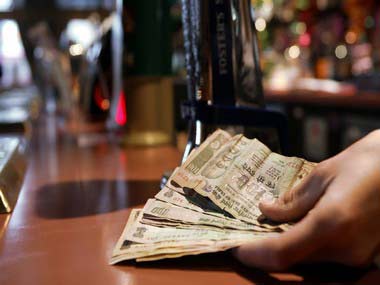As if we weren’t depressed already, here’s one more reason to feel some more economy blues: the rising level of short-term external debt.
According to a recent report by Morgan Stanley, external debt due in the next one year accounts for 43.5 percent of India’s foreign exchange reserves.
[caption id=“attachment_156226” align=“alignleft” width=“380” caption=“It also makes the Reserve Bank of India less inclined to spend the country’s forex reserves to prop up the rupee. AFP”]  [/caption]
The fall in the rupee - it hit a new record of 53.74 against the dollar today - makes repaying those debts an even heavier burden. It also makes the Reserve Bank of India less inclined to spend the country’s forex reserves to prop up the rupee.
Even excluding non-resident deposits (which are relatively more stable), short-term debt as a percentage of foreign exchange reserves has climbed to 30.7 percent at the end of June 2011 from 17.2 percent in March 2008, the brokerage said.
The report noted that while the ratio of total external debt to India’s gross domestic product (GDP) remained stable at 17 percent, the share of short-term external debt had climbed.
 Short-term external debt as a proportion to total external debt increased to 21.6 percent at the end of June 2011 from 14 percent at the end of March 2006, it said.
Impact Shorts
More ShortsNo wonder the RBI can’t stride into the forex market guns blazing to defend the floundering rupee.


)

)
)
)
)
)
)
)
)



